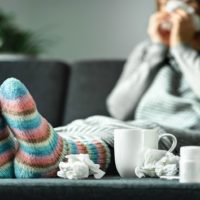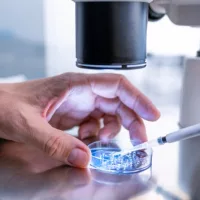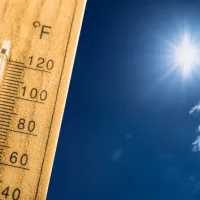
Tero Vesalainen(NEW ORLEANS) — When New Orleans freelance writer Sarah Netter first started coughing and showing a fever, her thoughts gravitated to the coronavirus outbreak that was starting to gain a foothold in the United States. When her breathing labored and her chest hurt, she became more convinced that these were the symptoms virus patients were consistently describing.
But then she was tested. The result: negative. Her doctor, she said, was “stunned.” Netter, a former ABC News producer, and her doctor remain unconvinced.
“You know, your symptoms match perfectly,” she said her doctor told her. “It could just be a random virus. But I’m pretty well versed in upper respiratory illnesses, and I have never had anything that felt like this.”
Medical experts say all evidence suggest the coronavirus tests becoming steadily more available are reliable. But as with any medical test, the coronavirus test cannot be expected to be accurate 100% of the time, so they still advise that people who test negative, if their symptoms are consistent with those of COVID-19, should consider getting re-tested and continue to quarantine until asymptomatic.
The are several tests for COVID-19 that are being used in labs across the country. Each of them looks for specific genetic material from the virus. If that unique genetic material is on the swab, the test reads positive. If the test does not find viral evidence on the swab, though, the test will read negative, even – in some cases – when the person might be infected.
The tests will “never be perfect,” said Dr. Angela Caliendo, an infectious disease expert at Brown University’s medical school. “You’re going to miss people, particularly … early in disease with not a great specimen.”
It is too soon to know how many tests are producing false negatives. Molecular tests for viruses like the ones commonly being used for COVID-19 generally have very high sensitivities. According to the CDC, the same kinds of tests used for flu have a sensitivity in the range of 90-95%.
Roche, one of the largest manufacturers of tests, told ABC News that their coronavirus tests have a similarly high sensitivity of 95%, meaning that the tests could miss about 5% of infected people.
Others did not provide ABC News with a figure. Quest, for example, another major manufacturer, told ABC News that because the tests were approved by the FDA under an Emergency Use Authorization, “these FDA EUA assays have not been clinically validated. Hence there are no clinical sensitivity and specificity data for any of the FDA EUA assays.”
But Harlan Krumholz, a professor of medicine at Yale and director of the Yale New Haven Hospital Center for Outcomes Research and Evaluation, has warned that the problem could be much bigger than that.
“Unfortunately, we have very little public data on the false-negative rate for these tests in clinical practice,” Krumholz wrote in The New York Times on Wednesday. “Research coming out of China indicates that the false-negative rate may be around 30 percent. Some of my colleagues, experts in laboratory medicine, express concerns the false-negative rate in this country could be even higher.”
While a positive reading is almost always reliable, said Dr. Mark Abdelmalek, false negatives can surface in cases where the test is administered incorrectly, or the sample is mishandled on the way to the lab.
“All tests have a chance of false negatives,” said Abdelmalek, an ABC News medical contributor. “It’s not that this test is faulty.”
There are a few scenarios, Abdelmalek explained, that can skew test results.
Faulty Collection: The preferred swab is from the back of the nose. Samples from the back of the throat or the nostrils are sometimes taken, but those could increase the chance of a negative test even if a person is infected.
Bad timing: If the test was conducted too early or too late, virus may not be detected. Swabs collected too early may not capture enough virus for a test to pick-up the virus particles. And if they are sampled too late, virus levels may have begun to subside, leaving too little of the virus to be detected.
Mishandling: Given the crush of tests being collected, samples that are not stored properly – refrigerated immediately, and frozen if they are held longer than 72 hours – can degrade before they are tested.
“Every test has a limit of sensitivities,” said Dr. Alan Wells, a professor of Pathology at the University of Pittsburgh Medical Center. “You can’t expect of every virus that if you have very, very low levels of virus, that I can find it because it’s not there to be seen.”
“I know it’s disconcerting for families and the public to hear that you can’t find anything, but this is nothing that’s different from any flu season where there are some respiratory pneumonia, pneumonias that tend to not be explained,” Wells told ABC News. “That’s not as bad as it sounds. And the reason it’s not as bad as it sounds is the treatment for most of these patients…is the same.”
While the idea of potentially suffering from COVID-19 but not testing positive for it sounds alarming, medical experts said it doesn’t need to be. Given the symptoms Netter was facing, for example, she said her doctors advised a course of treatment no different than the one for coronavirus.
“I’m still quarantined,” she said. “I’m going to wait until I’m 100 percent asymptomatic … [and] not going anywhere. I’m staying at home.”
Copyright © 2020, ABC Audio. All rights reserved.















